How to Tell if Gold is Real (17 Best Testing Methods)
Advanced techniques plus simple DIY methods
By Jane Pardo | Updated December 31, 2023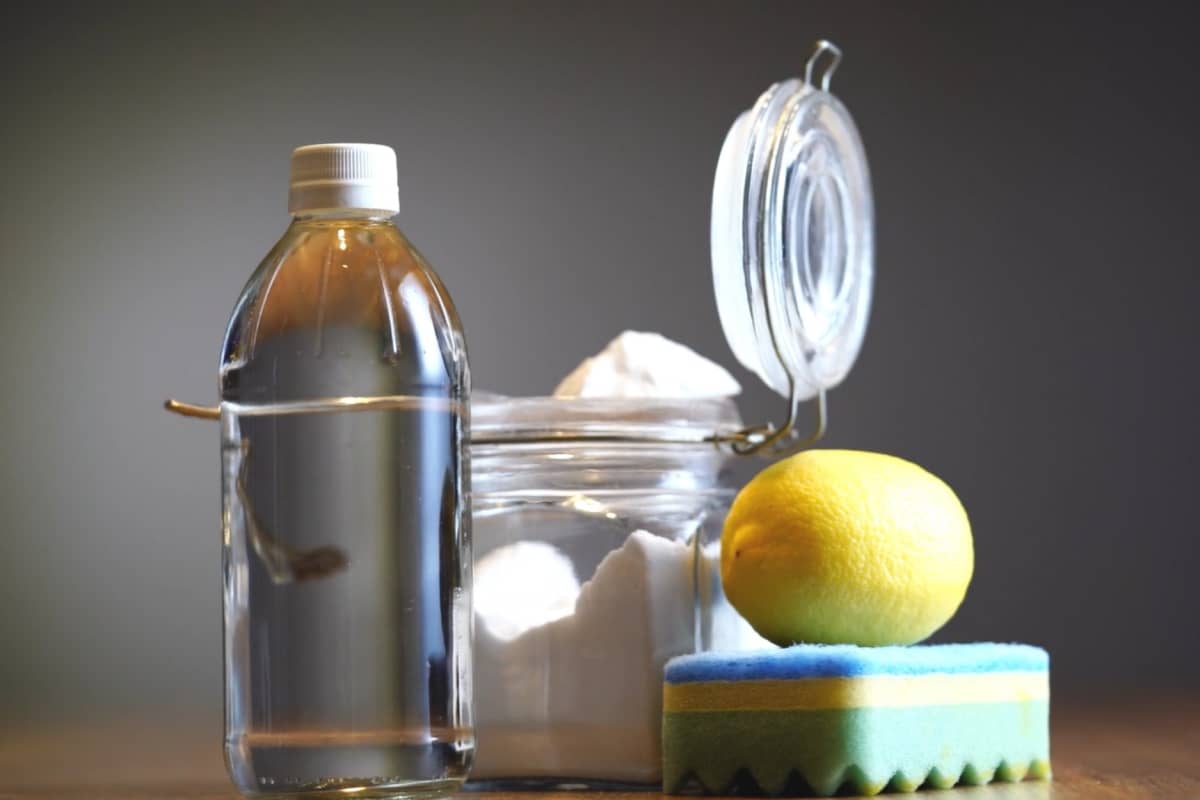
Determining the authenticity of your gold will ensure it has the exact value you expect, whether you’re expanding your collection, keeping a treasured heirloom, buying gold or planning to resell.
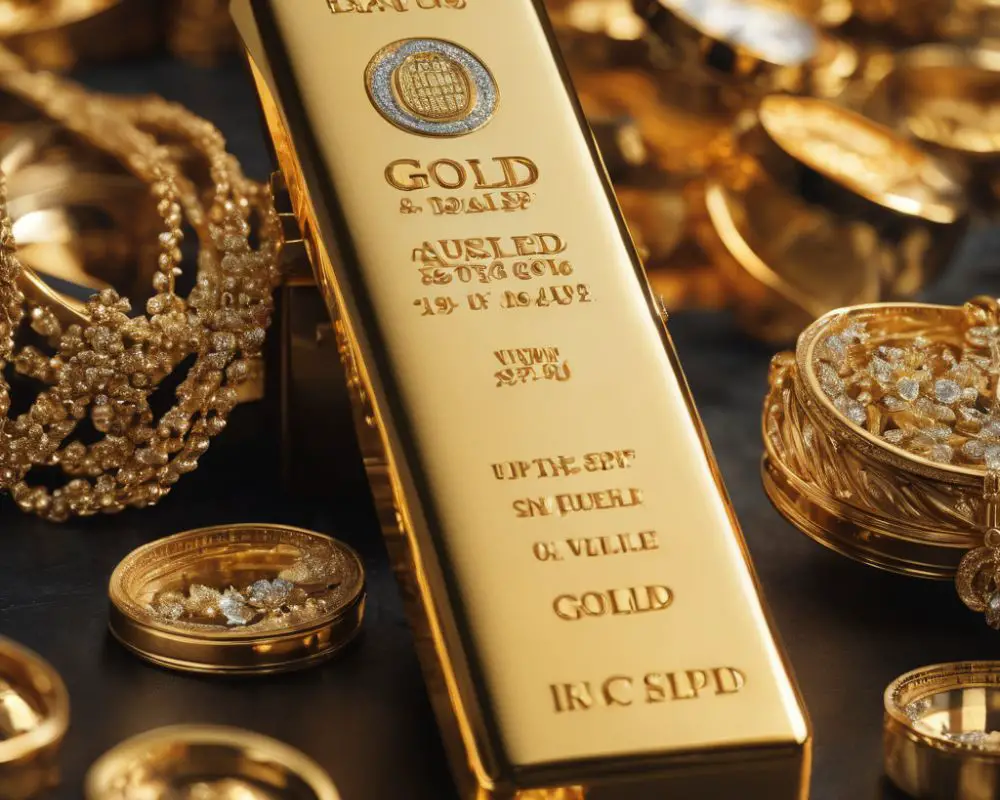
I think knowing how to tell if gold is real, is a must nowadays. My professional experience helped me in many situations.
For example, my family had a centuries-old gold locket. I thought it had been passed down through the generations, like a true antique. But, you know, we weren’t sure if it was pure gold, so we decided to check how much gold was in it. As an expert in this field, I knew that it could be damaged during some tests, so we thought about testing the gold without damage.
The simplest and fastest way to test gold was by checking with the magnet test. The magnet did not stick, which was a good sign, and the electronic method said that the gold was real. It was an enormous joy, and I understood that we must keep this medallion safe for the next generation.
That is why I decided, with my professional team to make for you a comprehensive professional guide where to share our expert skills in explaining the authentic gold testing methods, including advanced techniques in professional settings and simple DIY-accurate gold appraisal techniques you can do at home.
17 Best Gold Testing Methods
XRF analysis
XRF (X-ray fluorescence) analysis is a highly advanced method that can identify a vast range of elements quickly and efficiently.
It’s one of the best gold-testing solutions today, thanks to its portability, precision, and ultra-fast results.
For this gold purity verification, XRF analyzers use an X-ray source to analyze metal compositions.
- Unlike regular lab results that can take days, XRF analyzers are state-of-the-art electronic devices that provide the highest accuracy and precision within seconds.
- They can accurately detect real gold and measure metal content without causing any damage.
- They can identify unwanted impurities.
- However, XRF analyzers come with exorbitant price tags. Some are specially designed for jewelry stores and other retail uses. Others are used for scrap sorting, mining, and forensics.
- XRF analyzers are available in portable, handheld designs.
Lab analysis
Laboratory methods use sizeable, expensive machines and require extensive preparation of gold samples.
- Lab analysis uses large benchtop analyzers for outstanding accuracy.
- Machines for lab analysis require a higher level of operation skills compared to handheld XRF analyzers.
Fire assay method
Fire assay, also known as cupellation, is the most precise gold analysis method.
However, it’s rarely done as it requires melting a gold item.
- Fire assay involves separating gold from impurities by melting the piece of gold in a cupel, a flat dish crafted from temperature-resistant material.
- Hot air is blasted on the cupel in a special furnace.
Fire assay is an incredibly destructive method that could ruin the entire design of a gold item.
Electronic gold testers
Electronic gold testers are highly reliable and accurate. They approximate gold alloy fineness without using any hazardous liquid or destructive method.
These innovative devices use electrical conductivity to identify gold purity. They apply an electrical charge to a gold piece and use an advanced sensor to measure the resistance level.
You’ll see the results instantly through a digital screen. Some electric gold testers assess gold karat levels and gold percentages.
An electronic gold tester is an excellent option if you want a fast, easy, and hassle-free process of testing without damage. This trustworthy gold verification helps you verify gold authenticity without scratching your gold item.
This touch-and-test method is also generally safe, requiring no protective gloves or goggles.
- Review the instructions and manufacturer data sheet carefully to understand the proper interpretation of results.
- Thoroughly rinse and clean your piece of gold to remove dirt and grime.
- Place your piece of gold on the contact surface or hold it with the alligator clip.
- Put the probe on your gold.
- Apply the charge once the conductor fluid solution reaches your piece of gold.
- Evaluate the results.
- Repeat the test on other parts of your gold to improve accuracy.
Lightweight and portable gold testers are available if you prefer something travel-friendly. Go for battery-operated devices for extra convenience.
We recommend a high-end device for better accuracy and more specific results, particularly if you need to frequently test numerous gold items.
Note: Counterfeit gold crafted from surgical-grade stainless steel and zinc gold alloys could show false results. Gold with heavy gold plated or filling may also sometimes show as real gold.
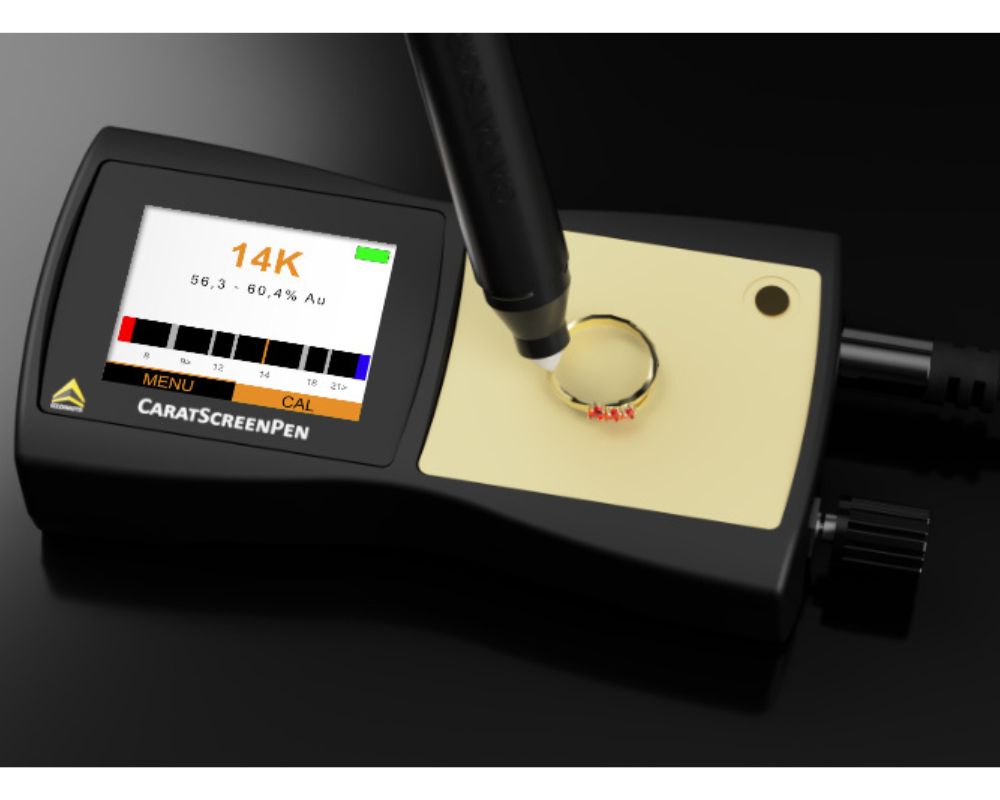
Nitric Acid test
The nitric acid test gold is another accurate DIY method to verify the authenticity of gold.
It uses a nitric acid solution to evaluate gold karat purity.
Pure gold resists corrosion and tarnish despite exposure to most acids. Nitric acid is harsh on false gold, especially copper-based alloys.
With the nitric acid test, you’re simply testing the purity of a small scratch mark.
- Unpack your acid test kit and read the instructions to interpret the results correctly. Keep in mind each pre-made acid is designed for a particular karat. For example, you may only use one bottle for 18k gold and a different acid for 22k gold.
- Create a tiny scratch on your gold using a sharp object like a pocket knife.
- Apply a drop of acid over the scratch.
- Check the gold acid test color chart included in your acid test kit.
- Your gold is likely true to its karat level if the scratch mark looks the same. It may be of lesser purity if the mark fades. It’s likely fake if the scratch line disappears, turns green, or shows a bubble reaction.
Many affordable acid test kits are available online.
They typically have multiple testing solutions in easy-to-squeeze bottles to help you appraise different gold karats, including 10k, 14k, 18k, and 22k gold.
Caution: Gold acid tests can be inaccurate due to impurities, surface plating, improper application, or poor acid quality. To improve accuracy, use additional methods like XRF analysis, electronic gold testers, or professional appraisals.
Touchstone gold test
This testing method also uses an acid test kit. Your testing kit should include testing needles with a karat gold sample on the tip and the karat value on the side.
- Rub your gold against the touchstone to create a visible scratch line. Wear rubber gloves and clear goggles for protection.
- Use a testing needle to create a mark on the touchstone alongside your initial scratch line.
- Apply the acid onto each mark.
- Compare the resulting colors with the color chart to determine if your gold is real.
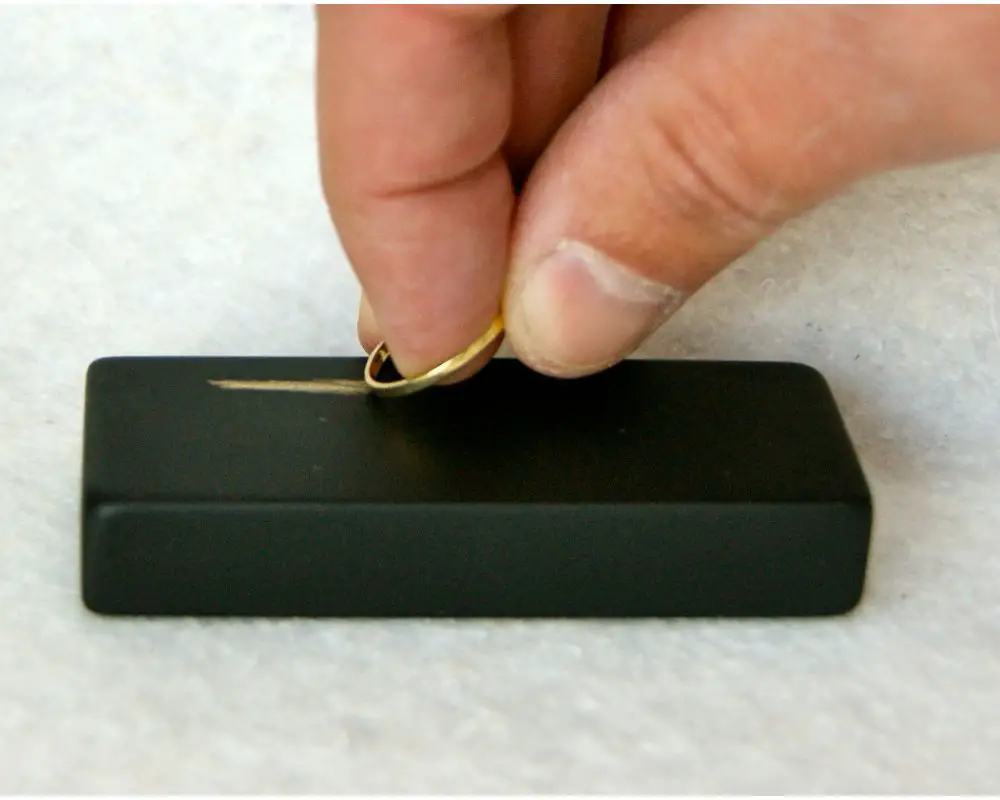
Stamp test
Real gold has a stamp that identifies its content and goldsmith manufacturer.
Hallmarks are hidden discreetly, usually on the inside of a ring or near the clasp of a necklace.
The stamp test is one of the fastest ways to tell if something is real gold.
- Carefully examine your piece of gold all over to find an engraved hallmark.
- This hallmark generally consists of numbers indicating its karat or fineness level.
- Real solid gold shows a karat level like 22k or 18k. In contrast, gold-plated items have letter markings like GF (gold-filled) or HGP/HGE (heavy gold electroplate).
- Check the karat system and millesimal fineness system to know valid gold purity numbers. If you don’t find your gold item’s purity number in the list, you likely have a gold-plated piece or counterfeit gold.
- A magnifying glass or a loupe magnifier, which uses an optical glass lens, will make it much easier to read tiny stamps.
Note: Counterfeit gold sometimes has fake hallmarks.
Lighter method
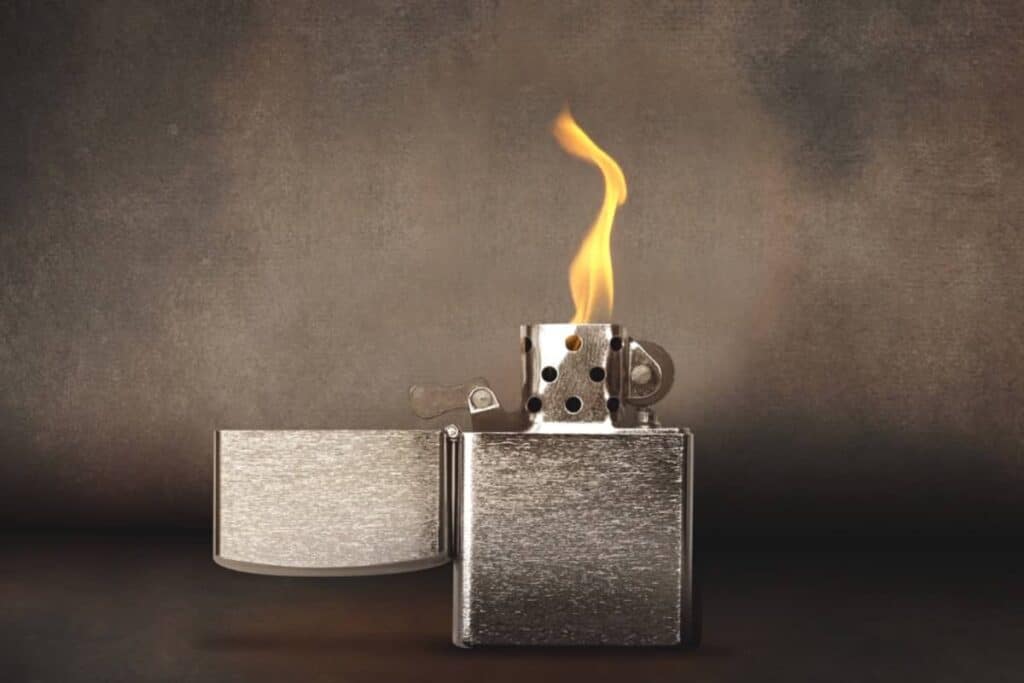
Testing solid gold with a lighter could work because real gold resists fire.
Use a butane lighter for best results.
- Expose your gold to a flame for at least 1 minute while holding it with a pair of tongs.
- Cool it down by holding it under running tap water.
- Real gold will initially brighten, but it won’t burn or get damaged.
- Your gold is likely fake if it darkens or changes color.
The lighter method is not ideal for testing gold-plated jewelry and lower gold karats, like 10k and 14k gold.
Gold alloys contain other metals, making them reactive to a flame.
Gold-plated jewelry has a light gold layer over a base metal, usually copper or brass.
Exposure to fire could permanently damage your gold-plated items.
Note: Some false gold bars have thick real gold plating over a metal core. They may not show visible discoloration and you may think that it is real gold.
Magnet test gold
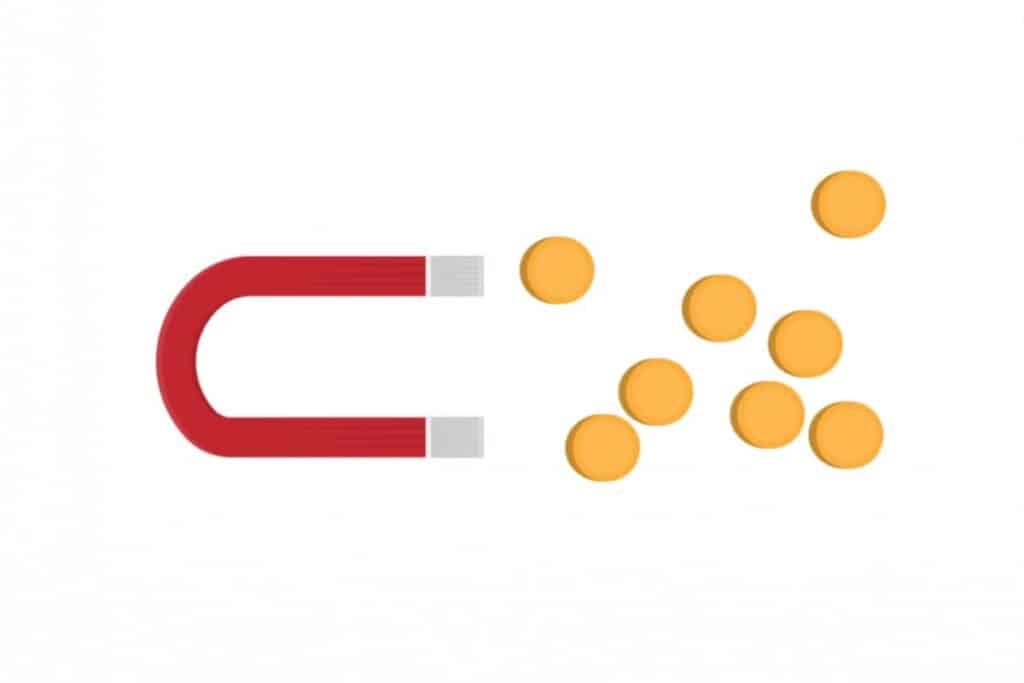
Pure gold, notated as 24k in the karat system, is not magnetic metal.
That means using a strong magnet can help reveal gold authenticity.
- Bring a neodymium magnet near your gold, ensuring no direct contact.
- Fake gold will be attracted to the magnet due to other metals it contains.
- Some jewelry pieces have metal clasps or locks that may be attracted to the magnet. Carefully observe whether the magnet attracts the rest of the gold jewelry.
Neodymium magnets are the most powerful magnets for testing real gold. Key chain magnets are perfect if you want something that conveniently fits in your pocket.
Note: Some counterfeits contain other metals that can be non-magnetic, leading to false results. For example, copper is not a magnetic metal.
Toothpaste method
Want to know how to test gold using toothpaste? This household item is easily accessible and very convenient for verifying if gold is real.
- Gently rub white toothpaste onto a small part of your gold for 30 seconds.
- Thoroughly rinse under running water and dry with a clean cloth.
- Real gold will look the same, whereas counterfeit gold will show dark spots or discoloration.
Note: The toothpaste method can scratch solid real gold and gold-plated jewelry due to abrasive ingredients.
Lemon method
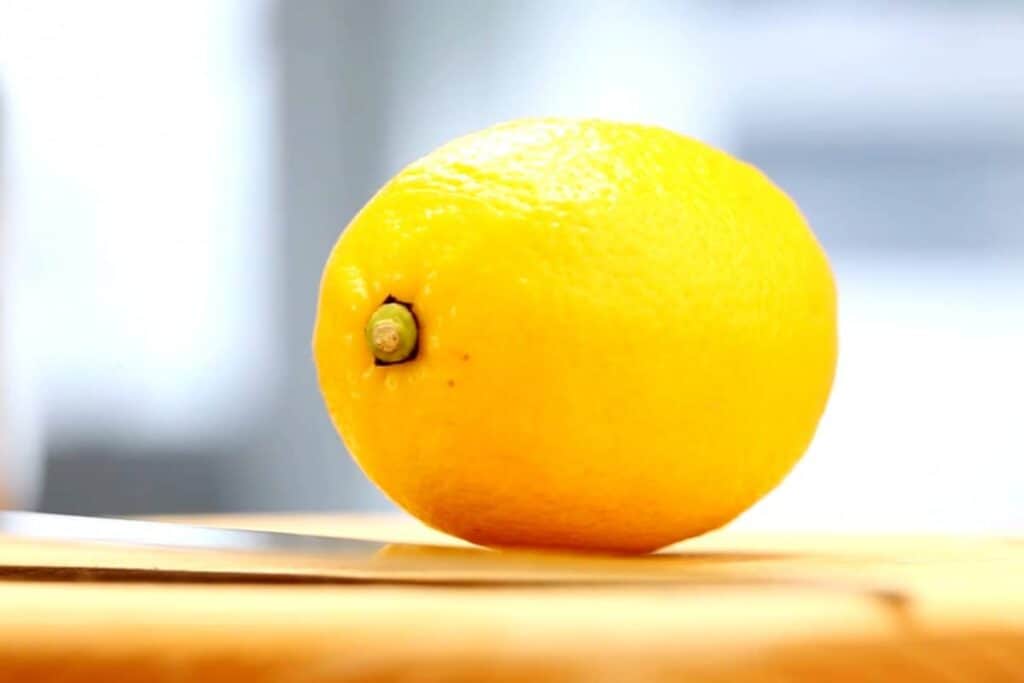
The lemon method can help identify if gold is real because lemon juice is highly acidic.
- Create a small scratch on your gold using a needle.
- Use a liquid dropper to apply a small amount of lemon juice over the scratch.
- Rinse your gold and clean it with a soft cloth.
- Counterfeit gold and gold-plated items will show signs of discoloration.
Note: Some gold alloys with higher-quality metals may not react to the acidity of lemon juice.
Baking soda method
Baking soda is an alkaline compound that can damage counterfeit gold.
- Create a paste by mixing baking soda with water.
- Dab the soft paste onto your gold.
- Thoroughly rinse under running water after 30 minutes.
- Fake gold will change color due to the abrasive quality of baking soda.
The baking soda method can reveal imitation gold with low-quality metals or thin plating.
Makeup test
Genuine gold identification with makeup. Quick steps to identify if the gold is real:
- Apply a small amount of liquid foundation on the top of your hand. Leave it to dry.
- Add a bit of powder.
- Rub your gold against the area with makeup.
- Pure gold will leave a visible line or a dark streak. Gold-plated and imitation gold will not leave a noticeable line.
Float test
The float test, also known as the density test, works because gold is a highly dense precious metal.
Pure gold is extremely heavy. The purer the gold, the heavier it will be. A cubic foot of gold weighs around 1,200 pounds!
- Drop your gold in a glass or bowl full of water.
- If the gold is real it will sink to the bottom, whereas fake gold will float.
Note: Some imitation gold items are crafted from heavy metals, which means they could sink and pass the float test. Also, when testing the white gold, remember that white gold is heavier than yellow.
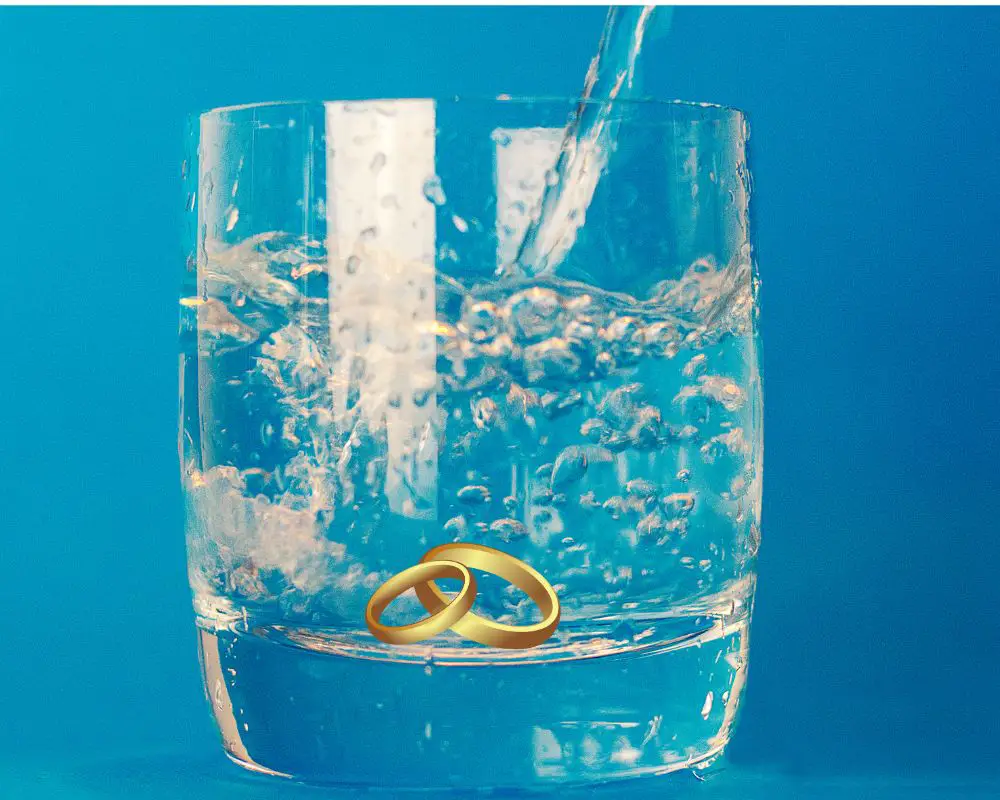
Ceramic scratch test
This testing method involves using an unglazed ceramic plate.
- Rub your gold against the ceramic plate.
- A gold streak indicates that your gold is authentic. Fake gold made with metal alloys will leave a dark streak.
Be sure to scrape your gold gently to avoid causing significant damage.
Skin test
Most jewelry pieces are gold alloys containing a mix of metals. For example, 14k gold contains 58.3% gold and metals like copper and zinc.
While high-purity gold is nonreactive, lower gold karats may cause your skin to blacken.
Your sweat and atmospheric elements, such as chlorine and sulfur, can react with the other metals in your gold jewelry, leading to skin discoloration.
The skin test can help reveal whether you have a high-purity gold or a low karat.
- Wash your hands thoroughly before doing the skin test.
- Hold your gold jewelry in your palm for several minutes.
- Observe any color difference on your skin. Genuine gold won’t cause any skin discoloration.
- If your gold jewelry leaves a green or bluish tint on your skin, your gold is either low karat or completely counterfeit.
Vinegar test
Vinegar is a mildly corrosive liquid that can damage false gold.
- Create a tiny scratch on your gold.
- Apply a few drops of white vinegar onto the scratch using a liquid dropper. Wait for 10 to 15 minutes.
- Rinse your gold jewelry under running water, and then dry it with a soft cloth.
- If gold is real, it will retain its lustrous sheen, whereas imitation gold will react and change color.
Note: Some counterfeits contain higher-quality metals that may not react to vinegar.
FAQ
What are counterfeit gold pieces?
Counterfeit gold pieces are designed to imitate the look of purest gold. Some are plated with real gold, containing other metal bases like brass or tungsten. Copper alloys are commonly used to create false gold. Brass (copper and zinc) retains its gold-like tone longer than bronze (copper and tin).
What do jewelers and professional appraisers use to verify gold authenticity?
A professional jeweler verifies gold authenticity using a combination of techniques, including acid testing, X-ray fluorescence, lab tests, and electronic gold testers.
Is it safe to test gold at home?
Yes, it’s generally safe to test gold at home as long as you follow safety precautions and properly use tools. Keep in mind to wear gloves when necessary to prevent skin irritation.
How do you test for real gold at home?
There are many methods to test for real gold at home like: the magnetic test, the water test, the baking soda test, the vinegar test, lemon test. But one of the easiest and safest methods is the water test: you need to take a glass and fill it with water. Drop in water the jewelry you want to test. If your jewelry sinks, it is real gold, because real gold is a heavy metal. The same method can be used also for white gold.
Final thoughts
Whether you’re a new gold investor or a seasoned collector, our tips above will help you learn how to tell if gold is real.
It’s best to perform multiple tests to get a good idea of your gold’s authenticity. If you want to know for sure how much gold is in your gold, take your gold jewelry, coins, or bullion bars to an experienced and reputable jeweler for professional testing and appraisal. I hope our experience was useful to you and please, write in the comments your experience and what new methods you know to test the precious metals.
Written by Jane Pardo

Jane Pardo is our senior gold & silver expert. Jane lends insight into precious metals investing, collecting, testing, and maintenance.
Trending posts under
As participant in an affiliate advertising program, we earn from qualifying purchases.